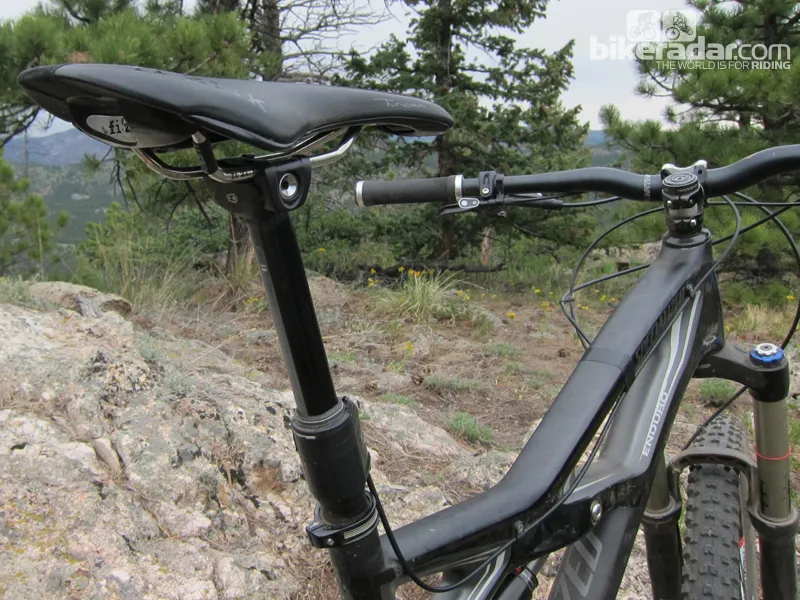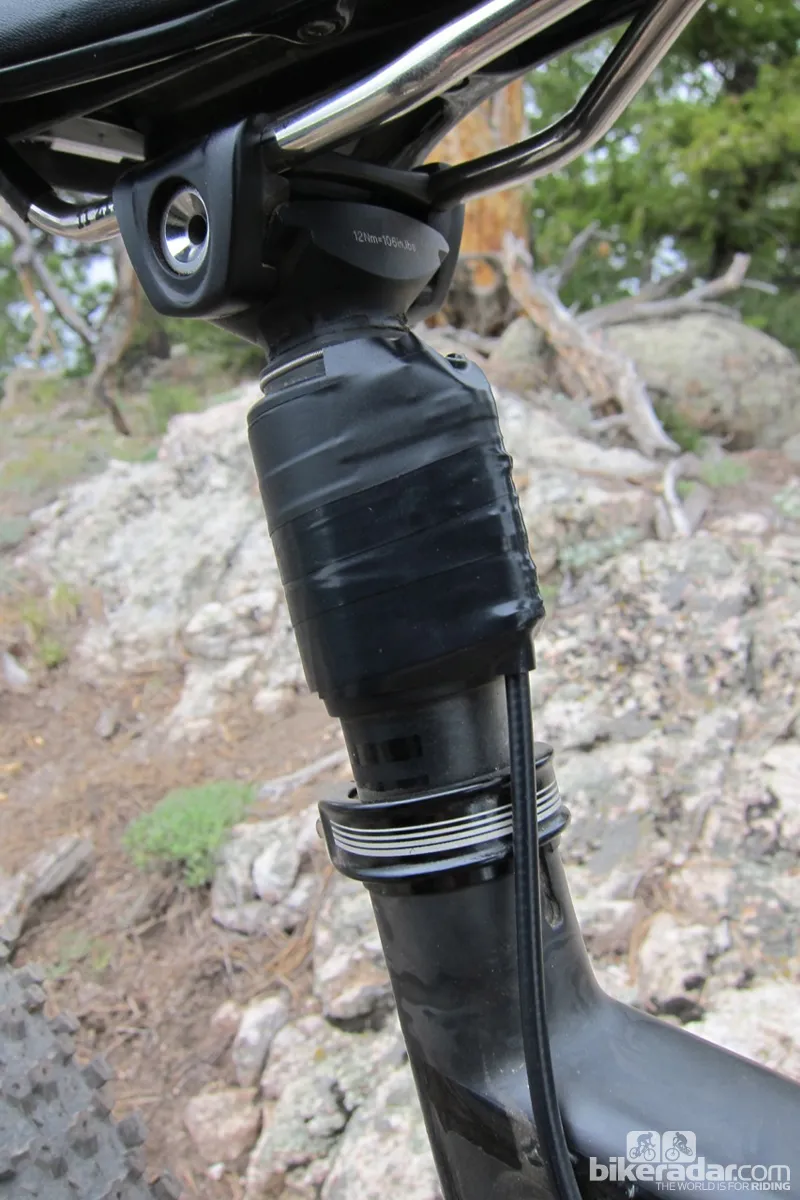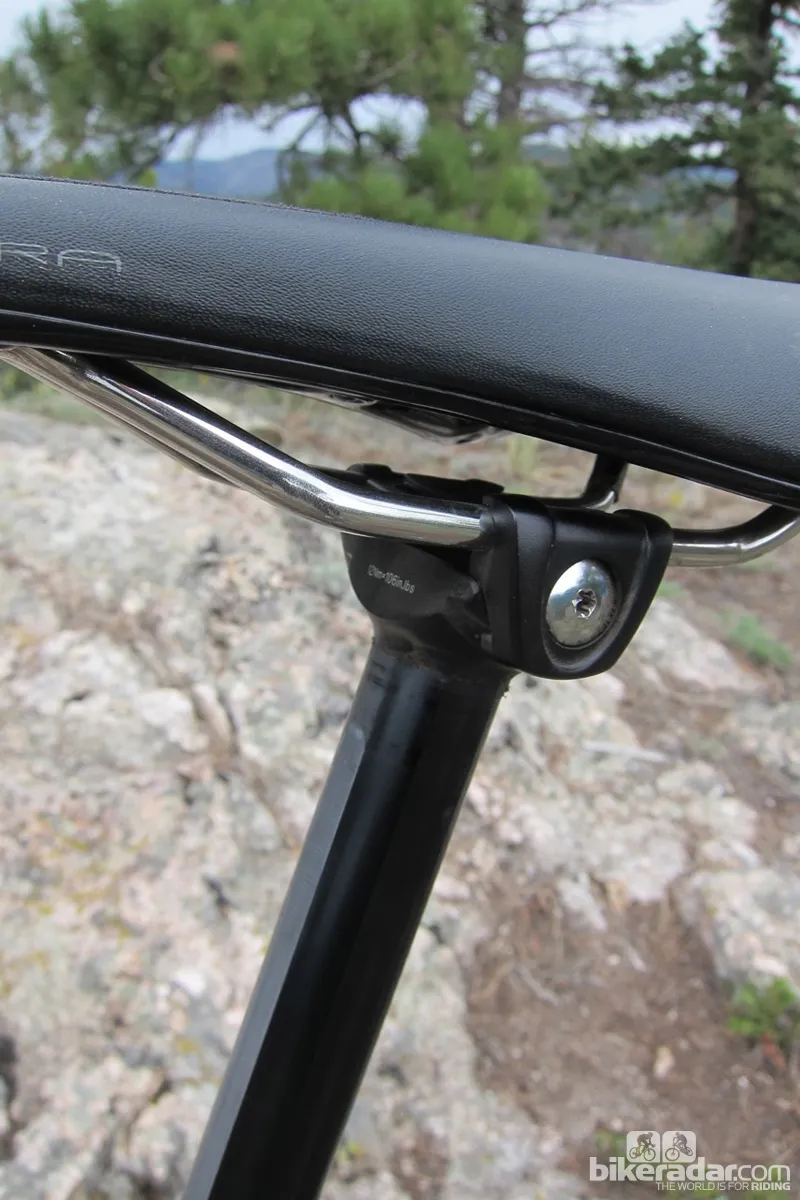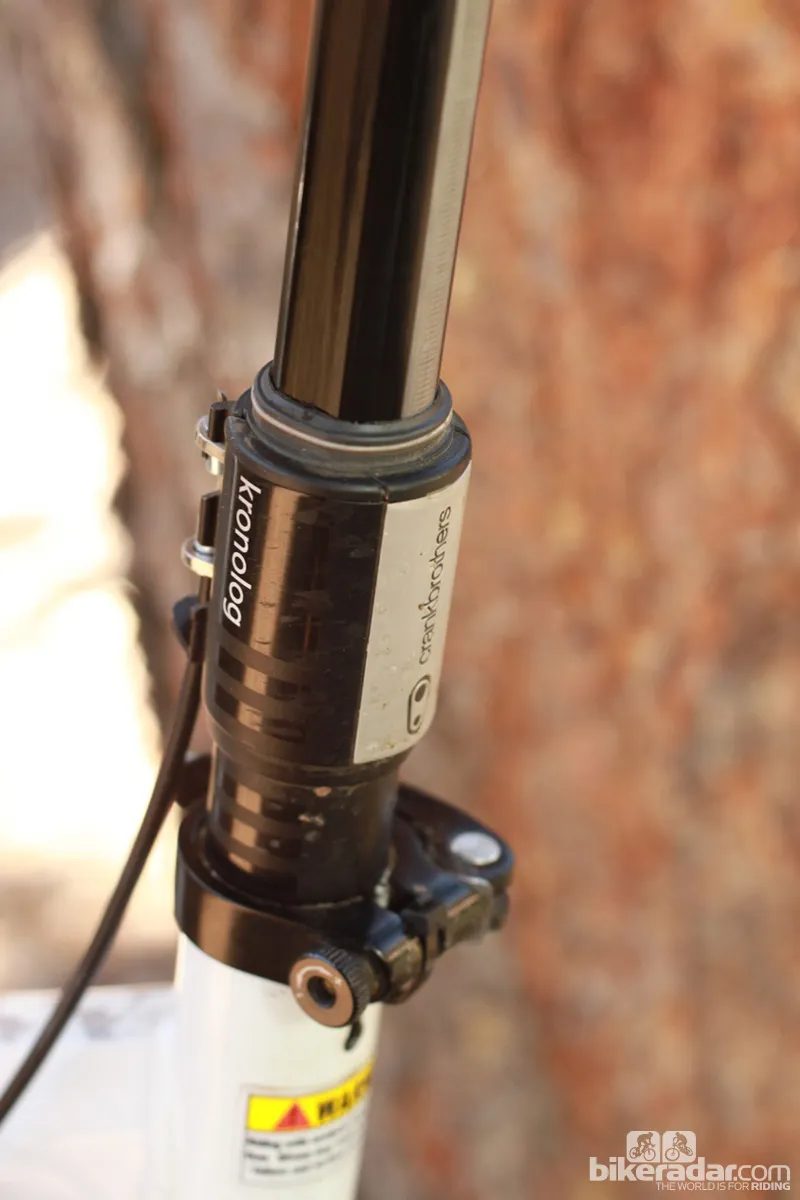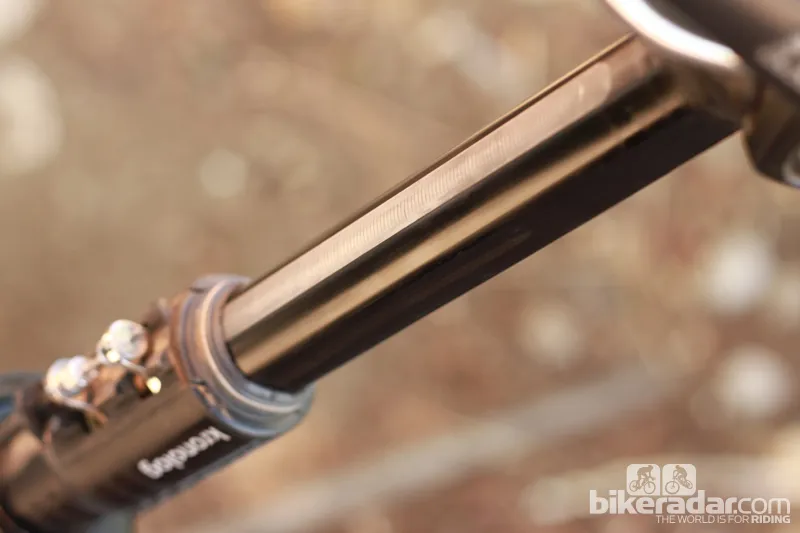We have to commend CrankBrothers for going back to the drawing board on dropper posts to produce their new Kronolog. It's a true ground-up design, which addresses some of the key issues with its predecessor, the Joplin, and adds some excellent new features including a fixed-position remote cable.
Trouble is, reliability is still a problem. While our post's strong start out of the box put it in contention as a category leader, stickiness has begun to hamper its up-down action and the clamping surface on the stanchion is showing premature wear.
Pertinent stats
Our complete Kronolog system weighs 550g, which is built from the 465g claim for the bare post, and the 28g remote with its required cable and housing. We measured the actual drop from full extension to full compression at 127mm (5in). Cable replacement and air-pressure adjustment is a breeze, thanks to the easy-to-follow instructions.
For smaller riders who require a lower seat height, CrankBrothers include spacers to reduce the travel in 20mm increments. Set in full travel mode, the Kronolog sits 2.1cm higher than the RockShox Reverb at its max insertion. (Note that shorter riders may have to step the Kronolog down 0.75in to achieve the same saddle height. Did we mention the US$300 price is $70 less than Reverb? Well, it is.
General operation
Despite a slowdown in performance over time, the Kronolog still has many admirable attributes. We like the fixed-position remote cable and the hard lock the post offers when adjusted (as opposed to the suction-type lock of many hydraulic units). When you pick the bike up by the seat, the Kronolog is locked in.
The lateral wiggle that hampered the Joplin is gone, giving a rock solid feel. The new lever is also improved. It offers a sure one-way actuation – versus the 360° joystick actuation used on the Joplin – and it’s elegantly adjustable for above- or below-bar usage, on the left or right side. We found it to mix well with Shimano and SRAM shifters, as well as brake levers from various companies.
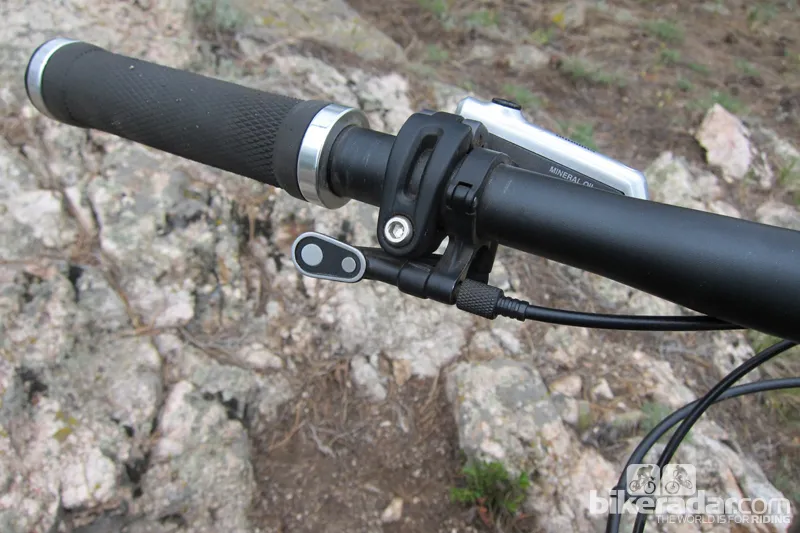
The new actuation lever is solid, with a positive feel, yet still quite versatile in terms of position
While not as convenient – in terms of fine-tuning and adjustability –as a two-bolt, micro-adjust clamp, CrankBrothers' one-bolt design adapted from the Cobalt line of seatposts is supremely solid. So while it takes a bit more fiddling to adjust saddle position, once it was set we never had a slip.
CrankBrothers brag that the air-powered mechanical post mimics the feel of hydraulic models, yet provides greater reliability – something they needed to improve given the spotty history of the Joplin posts. They're right on the first point – the Kronolog certainly offers a feel that’s very close to a hydraulic post.
The feature that lends that feel, and something that we love, is the way the post switches to a slower damped action in the last 5mm or so of travel on re-extension, which gives a misplaced butt a love-tap, rather than a slap. Some may miss an audible top-out, but we haven’t.
We rode the new Kronolog almost exclusively for two months. After switching back to a Reverb we noticed just how much extra effort the CrankBrothers post takes to operate. It requires more force at the thumb lever and a focused weight shift to compress it fully. Out on the trail, though, operation is thought-free and the adjustability is appreciated. The fixed-position cable is at the very top of the post's feature set too, benefiting both our legs and the frame's finish.
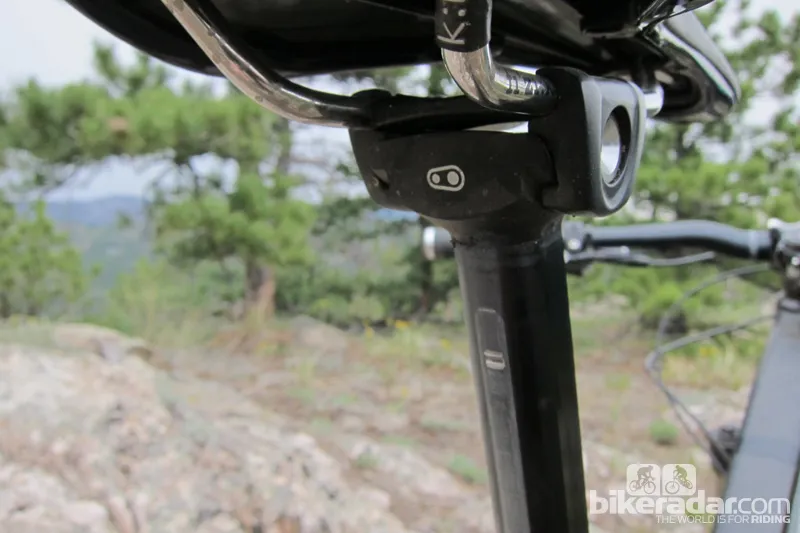
We found the Cobalt style clamp to be solid once adjusted. However, making micro adjustments is tough
Two-point-five months in: A breakdown in ideal operating conditions
In the early stages of our test period, the Kronolog replaced RockShox’s Reverb as our go-to dropper. Then the wheels – or rather the cable-clamp cover –came off. We lost it somewhere out on the trail, which exposed the sharp internals to our legs and the elements.
The former presented immediate issue, but we didn't expect any contamination of the post due to our hot and dry Colorado spring testing conditions. We were wrong. The post's up-down action has deteriorated – something we attribute to the fact that, as it isn't hydraulic, it uses grease versus an oil bath for lubrication.
It may be that the post is under-lubricated or that the grease CrankBrothers selected is too light and/or broke down too quickly. The post’s stanchion, or quill as they call it, bears a greasy film, which seems to come from the broken down grease used to smooth the post's action. Regardless of the cause, the result is that our Kronolog has become much slower in recoil.
Roughly a month-and-a-half in, the slowed operation of the post required us to bump pressure up to the maximum our body weight can deal with, right under 70psi (max recommended is 80psi; if we put any more air into the post’s spring, we wouldn’t be able to fully compress it). Even with the extra pressure, recoil to full extension is notably slower than when the Kronolog was new.
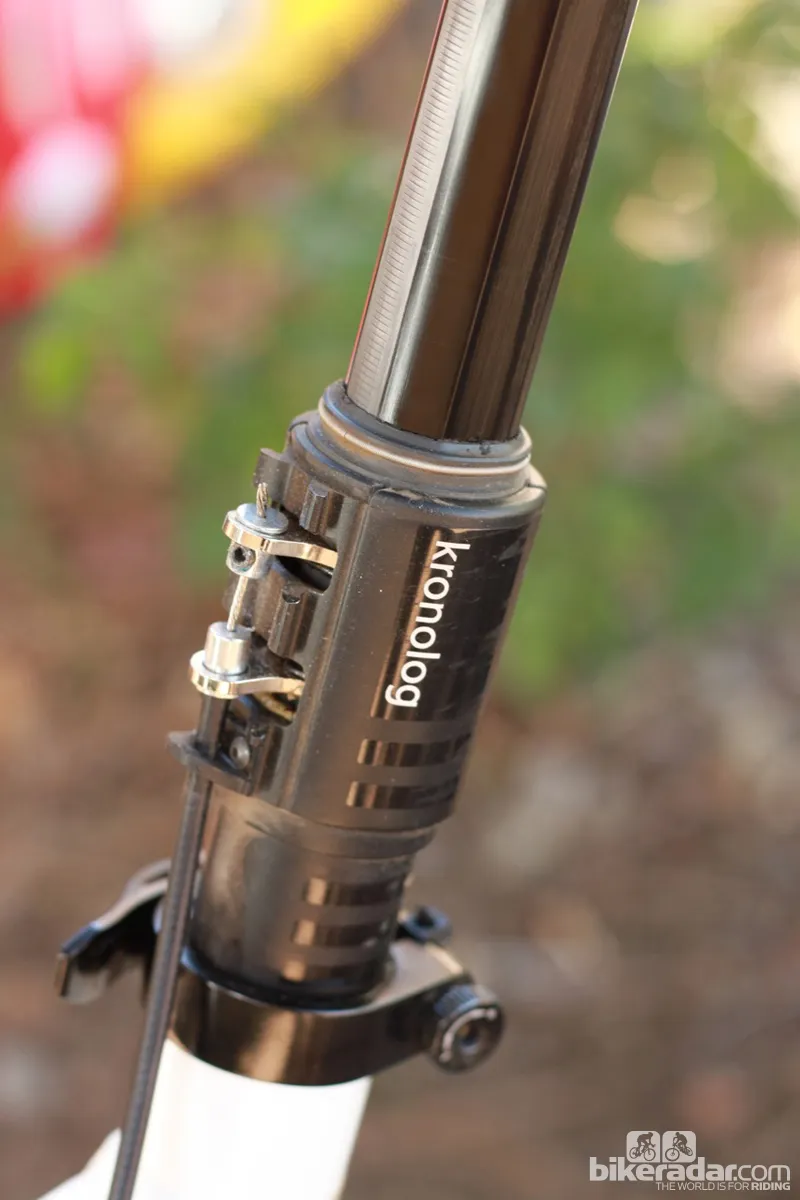
Our post's performance deteriorated after we lost the cable clamp cover
We’ve also found that with every half-dozen or so height adjustments the post fails to return to full extension and requires a physical pull to get the last few millimeters out of it. Clark Brewster, CrankBrothers' lead designer on the project, recommended that we lubricate it with a chain lube. We did, and subsequently got much of the initial reactiveness back, though not quite enough to bump back down in air pressure.
The post has also developed a bit of hesitation before it locks in at either full extension or full compression, and the bead-blasted and scored clamping surface on the front and back is starting to show wear as well. “That quill [stanchion] is 3D forged and has tons of QC [quality control] checks on it,” said Brewster. “The ones we have we’ve tested hardness and they’re all in spec. We hold that to a crazy tolerance standard."
However, he admitted: "The 'jammers' are a little more difficult.” Right now CrankBrothers are looking to the stamped, hardened, tumbled and plated steel locking plates as the possible cause of the accelerated wear. “We have someone in Taiwan working on this,” said Brewster, stressing that this issue would fall under CrankBrothers’ two-year warranty, without question.
So that’s where we are: two months in, and our Kronolog is looking for some love. While the post remains mechanically sound – there’s no lateral slop, the air spring remains air-tight and the lock is rock solid – we’re missing parts (the cable clamp door), the stanchion is showing signs of premature wear and the lubrication isn’t quite what we’d hope for. In short, it’s required more maintenance than we expected to keep it working reliably.
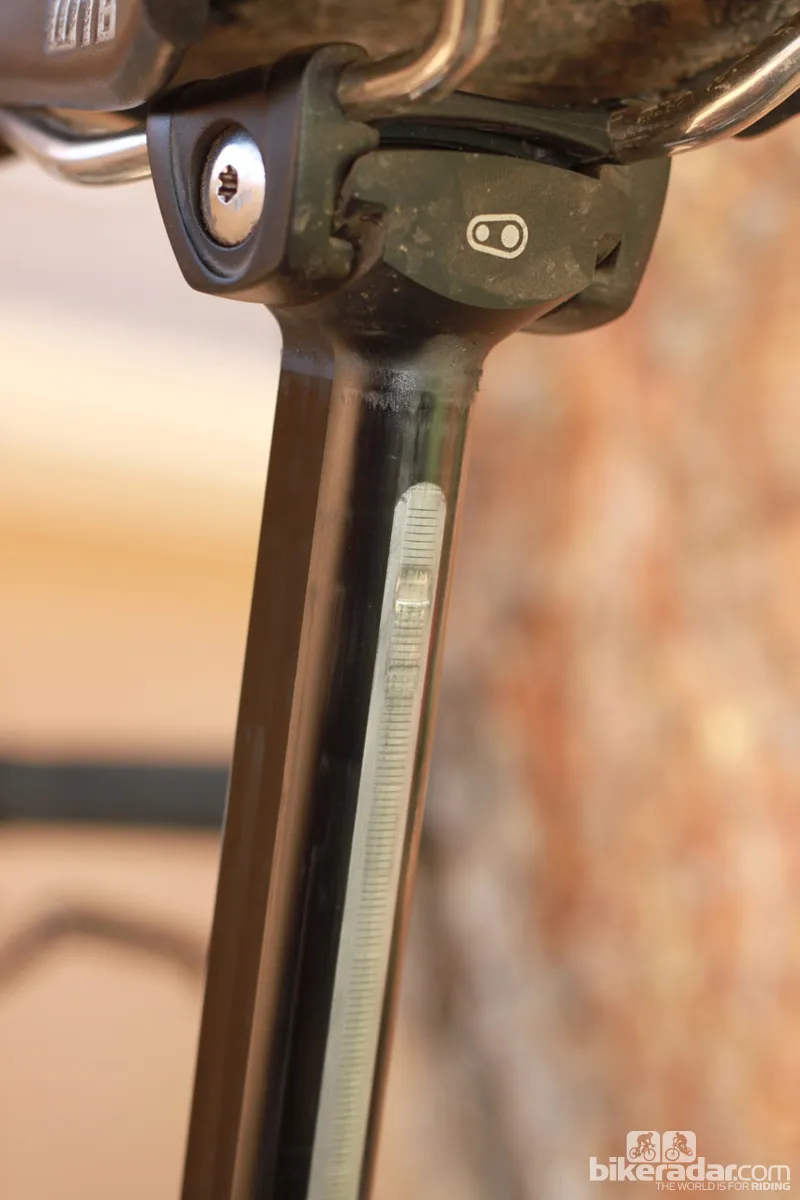
The clamping surface is to spec, say CrankBrothers and they're currently looking to the jammers as the reason for our premature wear
